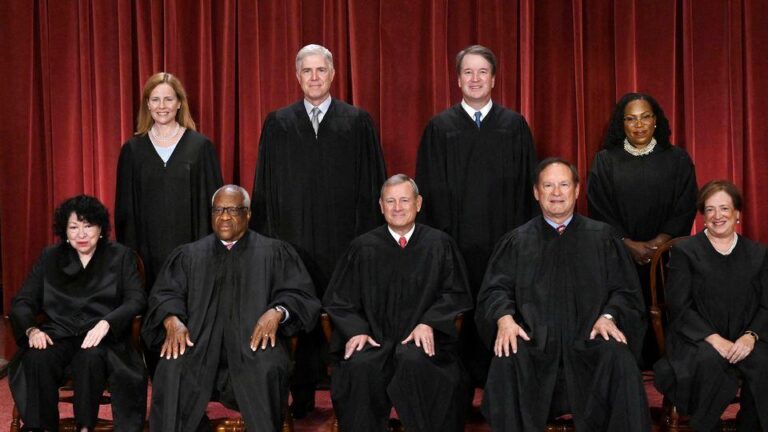Supreme Court Confronts Trump’s Bid to Abolish the Department of Education
In a landmark legal maneuver, former President Donald Trump has submitted a formal petition to the U.S. Supreme Court seeking permission to dismantle the Department of Education. This bold initiative challenges the entrenched federal role in managing education policy, advocating for a complete transfer of authority back to individual states. The petition reflects a broader political vision aimed at minimizing federal oversight and empowering local governance in education.
Legal analysts identify several pivotal issues central to this case:
- Constitutional Grounds: Trump’s legal team contends that the Department of Education operates beyond the scope of constitutional authority, promoting state sovereignty over educational matters as more consistent with the Founding Fathers’ intent.
- Political Consequences: A successful challenge could dramatically alter the balance of power between federal and state governments, affecting funding streams, accountability standards, and nationwide educational consistency.
- Judicial Precedent: The Supreme Court’s ruling will not only address the legality of dissolving a federal agency but also clarify the extent of executive power in restructuring government bodies.
| Core Issue | Possible Outcome |
|---|---|
| Federal vs. State Authority | Decentralization of curriculum control and funding decisions |
| Education Funding | Risk of diminished federal financial support |
| Executive Power Limits | Potential expansion of presidential authority over agencies |
Expert Analysis on Potential Shifts in Federal Education Policy
Legal scholars remain divided on the immediate effects of this unprecedented petition, though many agree it could reshape federal education policy for decades. Should the Supreme Court side with Trump, it may establish a precedent enabling presidents to unilaterally reorganize or eliminate federal agencies without congressional approval, challenging the traditional system of checks and balances.
Experts warn that critical federal programs, such as Title I funding‚ÄĒwhich supports schools in low-income areas‚ÄĒand protections under the Individuals with Disabilities Education Act (IDEA), could face severe cutbacks or restructuring. The potential consequences include:
- Weakened federal oversight of educational standards and funding compliance.
- Increased state autonomy leading to a fragmented educational landscape with varying policies and quality.
- Adverse effects on vulnerable populations, including students with disabilities and those from economically disadvantaged backgrounds, due to reduced access to federally funded resources.
| Policy Area | Potential Impact |
|---|---|
| Title I Funding | Less federal control, increased variability among states |
| IDEA Protections | Possible funding reductions and diminished safeguards |
| Student Loan Programs | Uncertain future administration and reform efforts |
Nationwide Consequences for Students and Educational Institutions
If the Supreme Court approves the dissolution of the Department of Education, the repercussions for students nationwide could be profound. Federal oversight currently plays a crucial role in ensuring equitable access to education and enforcing anti-discrimination laws. Without this oversight, marginalized groups‚ÄĒincluding low-income students, individuals with disabilities, and minority communities‚ÄĒmay experience a decline in support services and funding designed to close achievement gaps. The decentralization of authority risks creating a patchwork of educational standards and resources, disproportionately impacting those most in need.
Schools and districts would face significant uncertainty, needing to adapt quickly to the absence of federal guidelines and funding mechanisms. Key areas likely to be affected include:
- Title I Funding: Essential financial aid for schools serving disadvantaged populations could become inconsistent or disappear.
- Accountability Systems: The removal of federal monitoring may hinder efforts to maintain transparency and uphold educational quality.
- Student Loan Programs: Federal protections and subsidies that enable millions to access higher education could be jeopardized.
Policy Experts Advocate for Stronger Protections to Safeguard Education Funding
In response to these legal developments, education policy specialists stress the importance of establishing firm safeguards to protect critical funding streams for public education. Without such measures, fluctuations in budgets could severely disrupt programs serving underserved communities, undermining efforts toward educational equity. Recommended strategies include:
- Enacting legislative guarantees that secure minimum funding thresholds.
- Creating independent oversight entities tasked with monitoring and reporting on the allocation of education funds.
- Establishing contingency reserves to ensure continuity during periods of administrative change.
To illustrate the potential benefits, analysts have developed a comparative model highlighting funding stability under current policies versus proposed safeguards:
| Evaluation Criteria | Existing Framework | Proposed Safeguards |
|---|---|---|
| Funding Stability | Moderate fluctuations | Enhanced consistency |
| Oversight Quality | Limited transparency | Independent and transparent monitoring |
| Emergency Preparedness | Minimal (no dedicated reserves) | Robust contingency funds |
Final Thoughts on the Future of Federal Education Governance
The Supreme Court’s impending decision on former President Donald Trump’s request to abolish the Department of Education represents a critical juncture for American education and governance. The ruling will not only determine the fate of a key federal institution but also establish important boundaries regarding executive authority. Stakeholders across the political spectrum are closely monitoring this case, which highlights the ongoing tension between centralized government control and decentralized state autonomy in shaping the nation’s educational future.







